#cukrarna
Photo
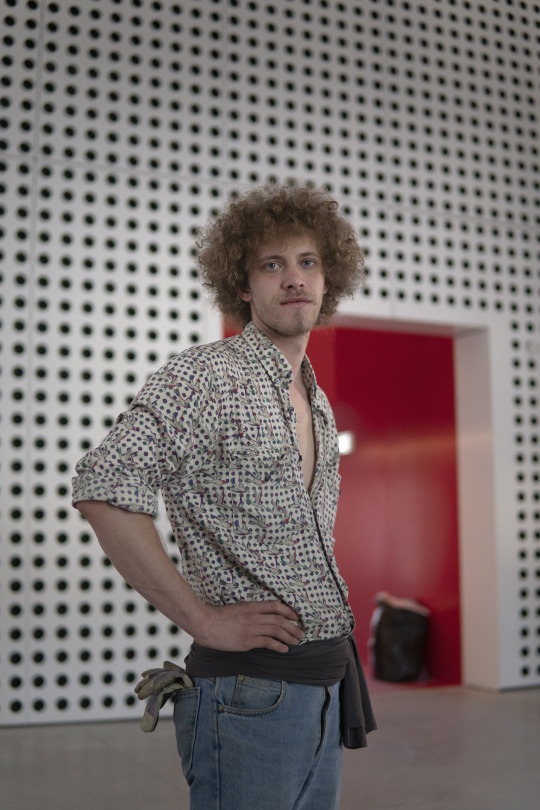
Lar Nikolaj Leskovar/ Cukrarna, 2022
#lar nikolaj leskovar#cukrarna#red#portrait#just a corpse#making of#photographers on tumblr#original content#tomaž šantl
1 note
·
View note
Photo
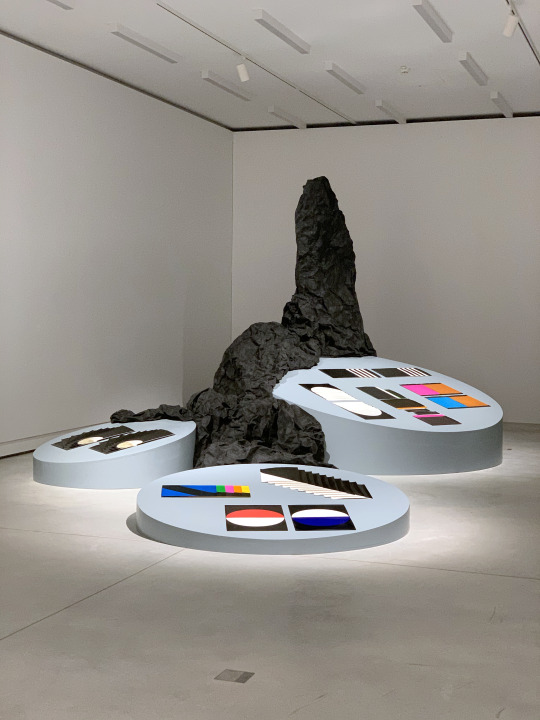
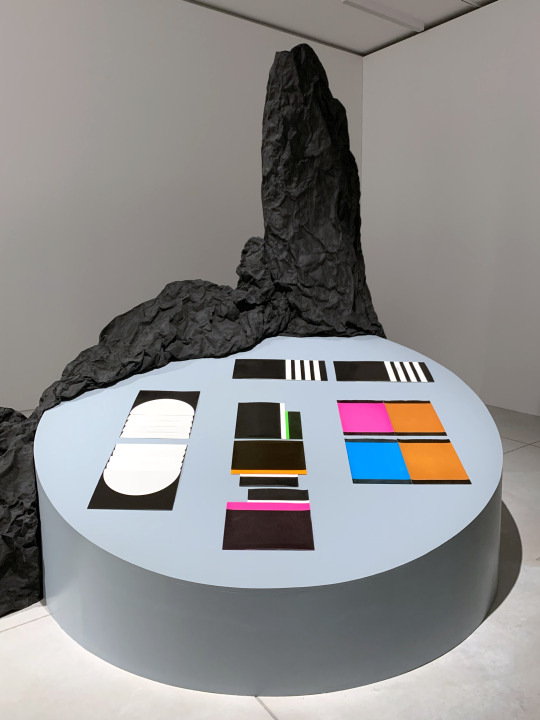
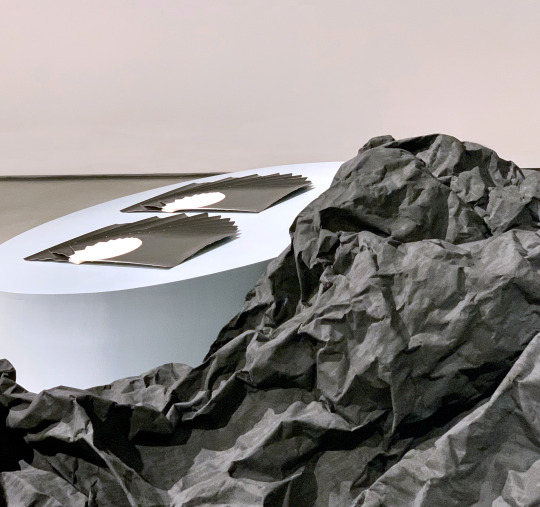
The 38th Dramatic Situation, 2021
Aleksandra Vajd & Anetta Mona Chișa
installation in Cukrarna, Ljubljana
Supported using public funding by Slovak Arts Council
#installation#sculpture#materials#photogram#cukrarna#collaboration#fondnapodporuumenia#fpu#slovakartcouncil#materiality#abstraction#situation#anettamonachisa#aleksandravajd
0 notes
Video
William Forsythe - Nikjer in hkrati povsod, št. 3 @ #Cukrarna https://www.instagram.com/p/CivPjaAoBy9/?igshid=NGJjMDIxMWI=
0 notes
Photo
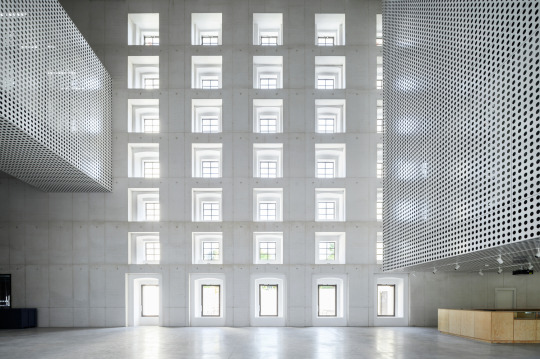

Cukrarna Space for Contemporary Art in Ljubljana, Slovenia.
SCAPELAB, 2021
34 notes
·
View notes
Text
The 35th edition of Ljubljana Biennale of Graphic Arts, scheduled to open from 15 September 2023 to 14 January 2024, has revealed participating artists, locations and public programme concept.
Titled From the void came gifts of the cosmos, the Ljubljana Biennale explores contemporary art and printmaking as a tool to form cultural alliances. The exhibition – curated by Ghanaian artist Ibrahim Mahama – will focus the historical connections between post-independent Ghana and the former Yugoslavia, grounding its design on the visions of Ghana’s first president, Pan-African theorist Kwame Nkrumah, and how his ideas are realised through collaborations with practitioners in Ghana as well as the former Yugoslavia, a member of the Non-Aligned Movement.
The Biennale will unfold in multiple venues across Ljubljana including the MGLC Grad Tivoli, MGLC Švicarija, Cukrarna, Krater Creative Laboratory, PLAC and SVS Studio.
The complete list of participating artists is as follows:
Anita Afonu, Selasi Awusi Sosu, Yasmina Benabderrahmane, Virginia Chihota, Galle Winston Kofi Dawson, Nabil Djedouani, Jihan El Tahri, Beti Frim and Ines Sekač, Christian Guerematchi, Ana Govc, Helga Griffiths, Eric Gyamfi, Sonia Kacem, Soghra Khurasani, Krater, Kvadratni meter, Lalitha Lajmi, Pat Mautloa, Amina Menia, Danilo Milovanovic, Yusif Musa, llona Nemeth, Noks Collective, Nonument Group, NPR, Henry Obeng, Mohammad Omar Khalil, Krishna Reddy, Abed Al Kadiri, Bruce Onobrakpeya in dialogue with Temitayo Ogunbiyi, Nolan Oswald Denis, Thierry Oussou, Tjaša Rener, Martyna Rzepecka, Jaanus Samma, School of Mutants, (Hamedine KaneStéphane Verlet Bottéro), Mori Sikora, Janek Simon and Max Cegielski, Sanaz Sohrabi, Duba Sambolec, Tejswini Narayan Sonawane, SVS, Tracy Naa Koshie Thompson, El Warcha in dialogue with PLAC (Participatory Autonomous Zone), Ala Younis, Lara Žagar and Manca Žitnik.
Designed by Exit Frame Collective, the Biennale will also present a series of public programmes that revolves around the Akan (Ghana’s largest ethnic group) concept of ‘agyina’ (council), echoing the Biennale’s vision on void as a site of solidarity.
4 notes
·
View notes
Text

Just had an amazing experience at the #GameChangerConference 🌟 Speaking on the 'Alternative Financing' panel was enlightening. I loved sharing my insights and learning from fellow panelists. Plus, the Cukrarna Art Gallery venue was simply stunning! #FinanceInnovation
0 notes
Photo
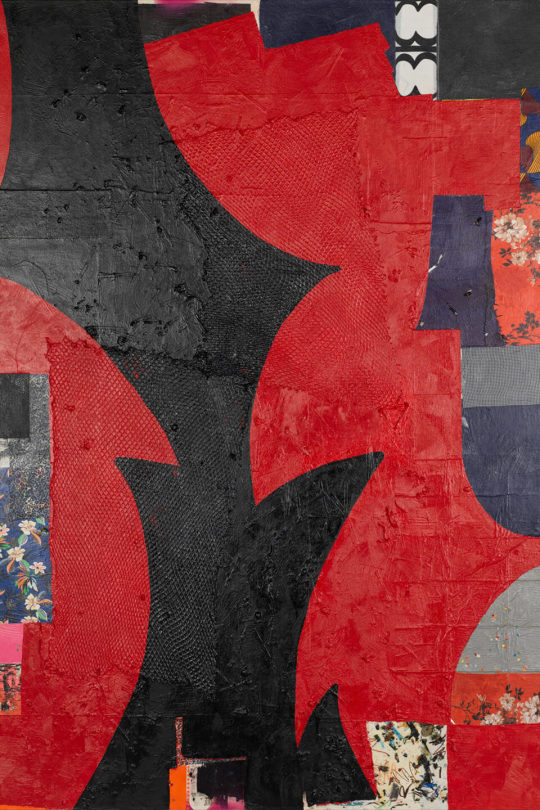
Adrijan Praznik: WHO CAN BE SURE OF ANYTHING*
5 – 26 May 2023
Opening: 5 May, at 7 pm
Curator: Mojca Grmek
Adrijan Praznik is a painter of the middle generation, who is already well recognised on the Slovenian art scene and has also exhibited abroad. In his paintings, he uses a variety of materials and processes, which he combines and interweaves within single paintings so that different themes also appear simultaneously in his works. His working method is therefore clearly collage-like, which the artist sees as a reflection of the times we live in and especially the way we experience our everyday lives.
In this exhibition, he presents his latest works, which focus on layering fabrics with different textures and patterns, applications of paint and various other materials such as nets, papers, found texts, images and so on. The artist applies the materials in several layers, creating a relief on the surface of the painting, which is sometimes further animated by pasty layers of paint in a chosen colour, usually black and white, or a limited colour palette. Finally, he covers the surface with varnish to emphasise the drawing of light created in the relief. He often inserts texts into his paintings that also serve as titles, or he clearly outlines individual motifs that function as symbols (e.g. a carnation or a skull).
The resulting works are characterised by a play of contrasts that takes place on various levels – between the colourful textile collage and the predominantly monochrome areas of colour, between the orderly treatment of the lower layers and the loose applications of paint over them, between the relief and smooth surfaces and the highlighted and shaded areas, and not least between the stark directness of the central field and the hints that arise from the accents on the edges. The method of consciously combining and interweaving different materials and processes, with which the artist creates an infinite play of contrasts in his paintings, is also conditioned by the process of their interpretation – it is determined by a constant transition between associations, memories, experiences, thoughts, feelings and the skipping between the conscious and the unconscious, which means that nothing definitive can be said about them.
* The title of the exhibition WHO CAN BE SURE OF ANYTHING is a visual quotation or transcription of the picture-text from one of the works in the exhibition.
────────────
Adrijan Praznik (1988) completed his studies in Painting at the Academy of Fine Arts and Design in Ljubljana. He has presented his works in several solo exhibitions, including at Simulaker Gallery in Novo mesto (2016), Hiša kulture in Pivka (2017), Alkatraz Gallery (2021), GalerijaGallery (2021) and Švicarija (2022) in Ljubljana. His work has been featured in many presentations at home and abroad, including in the exhibition A time without innocence at Moderna galerija (2019) and The next 21 days will be crucial at Škuc Gallery (2021) in Ljubljana. He also works as a curator and producer. In 2017–2018, he attended the School of Curatorial Practice and Critical Writing, World of Art. Since 2020, he has been the artistic director and curator of Simulaker Gallery in Novo mesto. As a curator and producer, he has co-created the konSequence exhibition in Ljubljana's Cukrarna gallery (2023) as part of the konS project. He lives and works in Ljubljana.
instagr.am/adrijan_praznik
Special thanks: Goran Bertok, Simon Gmajner, Lara Malec, Lenart Merlin, Jan Pogorelec, Miha Perne, Bernarda Praznik, Katja Vidovič, Jure Zrimšek and the institutes Projekt Atol, Kersnikova and LokalPatriot, as well as ŠKUC Association.
1 note
·
View note
Photo

Adrijan Praznik: WHO CAN BE SURE OF ANYTHING*
5. – 26. maj 2023
otvoritev: 5. maj ob 19. uri
Kustosinja: Mojca Grmek
Adrijan Praznik je slikar srednje generacije, ki je v slovenskem umetnostnem prostoru že dobro prepoznan, razstavlja pa tudi v tujini. Pri ustvarjanju svojih slik se poslužuje različnih materialov in postopkov, ki jih združuje in prepleta tudi znotraj posamezne slike, prav tako se v njegovih delih sočasno pojavljajo različne teme. Njegov način ustvarjanja je torej izrazito kolažen, to pa umetnik razume kot odraz časa, v katerem živimo, in še posebej načina, kako doživljamo naš vsakdan.
Na tokratni razstavi predstavlja svoja novejša dela, v katerih se osredotoča na plastenje tkanin z različnimi teksturami in vzorci, barvnih nanosov in raznih drugih materialov, kot so mreže, papirji, najdena besedila, podobe itd. Umetnik materiale nanaša v več plasteh in na ta način ustvarja reliefnost slikovne površine, ki jo mestoma še dodatno razgiba s pastoznimi nanosi izbrane barve, največkrat črne in bele, ali omejene palete barv. Površino na koncu prekrije z lakom in s tem poudari svetlobno risbo, ki se ustvarja v reliefu. V slike pogosto vključi tudi besedilo, ki nastopa obenem kot naslov, ali jasno izriše posamezne motive, ki delujejo kot simboli (npr. nagelj ali mrtvaška lobanja).
Dela, ki nastanejo skozi ta proces, zaznamuje igra kontrastov, ki se odvija na različnih ravneh – med pisanim tekstilnim kolažem in pretežno monokromnimi barvnimi ploskvami, med urejeno zasnovo spodnjih plasti in sproščenimi nanosi barv čeznje, med reliefnimi in gladkimi površinami ter osvetljenimi in osenčenimi predeli, nenazadnje pa tudi med očitno neposredostjo osrednjega polja in aluzijami, ki izhajajo iz akcentov na robovih. Metoda premišljenega združevanja in prepletanja različnih materialov in postopkov, s katero umetnik ustvarja neskončno igro kontrastov v svojih slikah, pogojuje tudi proces njihove interpretacije – opredeljuje ga nenehno prehajanje med asociacijami, spomini, izkušnjami, mislimi, občutji ter preskakovanje med zavestnim in podzavestnim, to pa pomeni, da o njih ni mogoče reči ničesar dokončnega.
* Naslov razstave, ki se v slovenščini glasi KDO JE LAHKO PREPRIČAN O ČEMERKOLI, je vizualni citat oz. transkripcija podobe-teksta z enega od del na razstavi.
────────────
Adrijan Praznik (1988) je diplomiral iz slikarstva na Akademiji za likovno umetnost in oblikovanje Univerze v Ljubljani. Svoja dela je predstavil na več samostojnih razstavah, med drugim v Galeriji Simulaker v Novem mestu (2016), Hiši kulture v Pivki (2017), Galeriji Alkatraz (2021), GalerijiGallery (2021) in Švicariji (2022) v Ljubljani. Sodeloval je na številnih predstavitvah doma in v tujini, med drugim na razstavi Čas brez nedolžnosti v Moderni galeriji (2019) in Naslednjih 21 dni bo ključnih v Galeriji Škuc (2021) v Ljubljani. Deluje tudi kot kurator in producent. V letih 2017–2018 je obiskoval Šolo za kuratorske prakse in kritiško pisanje – Svet umetnosti. Od leta 2020 je umetniški vodja in kurator Galerije Simulaker v Novem mestu. Kot kurator in producent je sooblikoval razstavo konSekvence v ljubljanski galeriji Cukrarna (2023) v sklopu projekta konS. Živi in dela v Ljubljani.
instagr.am/adrijan_praznik
Posebne zahvale: Goran Bertok, Simon Gmajner, Lara Malec, Lenart Merlin, Jan Pogorelec, Miha Perne, Bernarda Praznik, Katja Vidovič, Jure Zrimšek ter zavodi Projekt Atol, Kersnikova in LokalPatriot ter društvo ŠKUC.
0 notes
Video
Gibanje - Rehearsal at Cukrarna Lubiana #3 from Atej Tutta on Vimeo.
0 notes
Photo
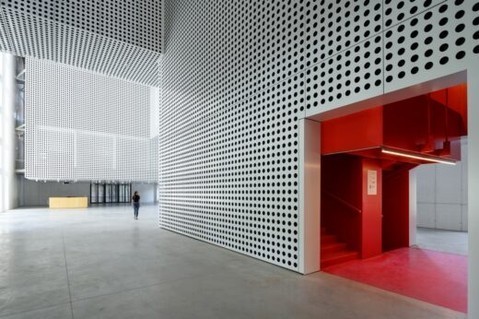
Cukrarna Gallery Ljubljana Building, Slovenia Visit #DesignDaily for more #architecture and #design DesignDaily.net #architect #interiordesign #designer #home #homedecor #landscape #house #decor #building — view on Instagram https://scontent-iad3-2.cdninstagram.com/v/t51.2885-15/285272274_705569860555022_3579627369878475426_n.jpg?_nc_cat=109&ccb=1-7&_nc_sid=8ae9d6&_nc_ohc=U2W8nDXuxqoAX-uNzCj&_nc_ht=scontent-iad3-2.cdninstagram.com&edm=ANo9K5cEAAAA&oh=00_AT_V7qrl_X1CMhPkd5SW0KM8FyZP9iHo1ZMuVpCAwuZ70w&oe=629C07C6
0 notes
Text
Cukrarna Gallery Ljubljana Building, Slovenia
Cukrarna Gallery Ljubljana Building Design, Scapelab Architecture Slovenia, Former Factory Development Photos
Cukrarna Gallery Ljubljana Building
1 June 2022
Design: Scapelab
Photos by Miran Kambič
Cukrarna Gallery Ljubljana Building Design
Cukrarna is a former sugar refinery, built in 1828 in Ljubljana, Slovenia. During its’ two-hundred-year history, it was a sugar refinery, destroyed in a disastrous fire, and later a tobacco factory, a textile factory, a military barracks, and a homeless shelter.
It was also a temporary home for many poets and writers from Slovenia’s Modern period, which was key to establishing Slovenia as an independent nation. Due to its’ significance as a monument of 19th century industry, it has been listed as a protected building, and due to its rich history, it is firmly anchored in the Slovenian nations’ subconscious as a cultural symbol.
In 2009 the City municipality of Ljubljana organized an international competition to find the best proposal for the renovation of this national monument. Scapelab won the competition with the key idea to carve out all internal structures of the building, preserving only the historic envelope, and converting the building into a multi-functional space for contemporary art.
The ground floor is an extension of urban public space, accessible to all, free of charge. Upon entering, visitors are made aware of the gargantuan dimensions of the former factory. The gallery volumes, designed as »white cube« galleries, levitate above the ground floor, hanging from the steel roof structure. They are separated from the historic envelope by a visible gap, and are wrapped in perforated, sleek metal skin, contrasting the concrete walls of the historic envelope.
The perforated skin is an aesthetic device, visibly marking the new volumes – but also a functional element. It is an acoustic dampener, reducing reverberation, which makes it possible to hold concerts in the main hall; it is also a lighting fixture, and an HVAC distribution system.
The building has a newly excavated basement, which holds a dedicated space for performance art, lockers, technical spaces, and workshops for preparing exhibitions. The gallery bar is designed as a sound stage, becoming a jazz club and live music venue in the evening.
The gallery spaces are designed as “white cube” galleries of different proportions. In key positions, the gallery spaces are transparent, showing the visitors new perspectives of the interior space. Part of the gallery spaces is also dedicated as a space for education, lectures, and children’s workshops.
The New Cukrarna represents a revolutionary new space in the cultural infrastructure of the city of Ljubljana. It is an urbanistic attractor at the city center’s edge, regenerating a former derelict city area.
It builds its image and aesthetic upon its rich industrial heritage, working with simple materials, and using repetition as a metaphor of the industrial revolution. This industrial choice of materials and visual language is carefully reworked as a floating composition of volumes, drawing inspiration from the rich cultural history of the poets who once resided here, to provide a platform for artists of the future.
Photos: Miran Kambič
Scapelab Ljubljana
Integralno načrtovanje
Levstikov trg 4a
SI-1000 Ljubljana t: +386 1 200 35 91
f: +386 1 200 35 98
e: [email protected]
w: www.scapelab.com
Art Galleries
Cukrarna Gallery Ljubljana Building, Slovenia images / information from Scapelab Architects
Location: Ljubljana, Slovenia, south eastern Europe
Ljubljana Buildings
Ljubljana Architectural Designs – recent selection from e-architect:
Ljubljana Railway Station Hall
Design: SADAR+VUGA
image courtesy of architects practice
Ljubljana Railway Station Hall
ALEJA shopping center
Architects: ATP
image courtesy of architects studio
ALEJA Ljubljana shopping center
bistro EK, Ljubljana
Design: dekleva gregorič architects
photo : Flavio Coddou
bistro EK Ljubljana
Architecture in Slovenia
Slovenia Architectural Designs – recent selection from e-architect:
Skorba Village Center Building near Ptuj
Design: Enota
photo : Miran Kambič
Skorba Village Center Building
Wellness Plesnik, Solčava, Slovenia
Design: enota
photo : Miran Kambič
Wellness Plesnik
Slovenian Architecture
Slovenian Architect
Comments / photos for the Cukrarna Gallery Ljubljana Building, Slovenia design by Scapelab architects page welcome
The post Cukrarna Gallery Ljubljana Building, Slovenia appeared first on e-architect.
0 notes
Video
youtube
Žigan Krajnčan: Oma Desala Cukrarna, 2021
2 notes
·
View notes
Text


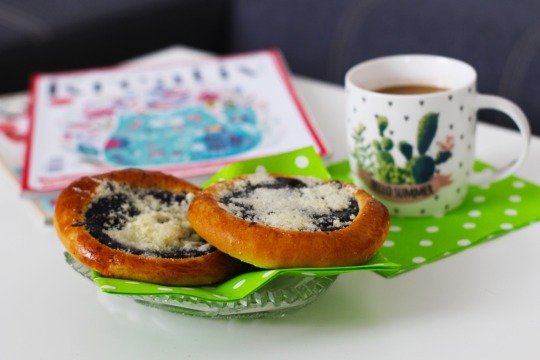

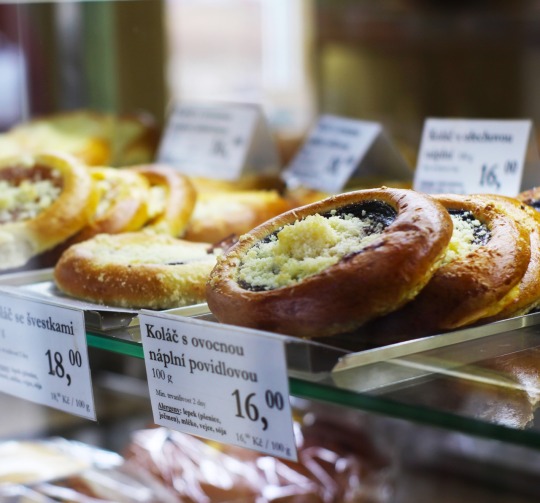
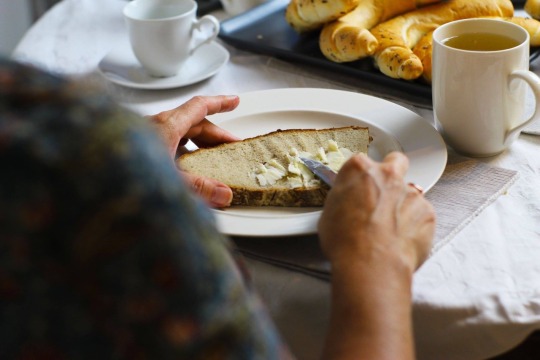
for: Pekárna a cukrárna Mikula 🥖
1 note
·
View note
Photo

Etceteral @ Cukrarna (at Cukrarna) https://www.instagram.com/p/CnplbrYomJm/?igshid=NGJjMDIxMWI=
0 notes
Photo

#bLaCK & #CoLoR #CUKRaReN #CUKRaRna #caNDy #SHoP 😎🇸🇰🖖 #bw #bnw #bANDw #bWphOTO #bnwPhoTO #bNwPhoTOGraPhy #bWphoTOgraPhy #blackandwhite #blackandwhitephoto #blackandwhitephotography 👽☕🎱👀 (v místě Košice - Šaca) https://www.instagram.com/p/CStdOq6rFNE/?utm_medium=tumblr
#black#color#cukraren#cukrarna#candy#shop#bw#bnw#bandw#bwphoto#bnwphoto#bnwphotography#bwphotography#blackandwhite#blackandwhitephoto#blackandwhitephotography
0 notes
Photo
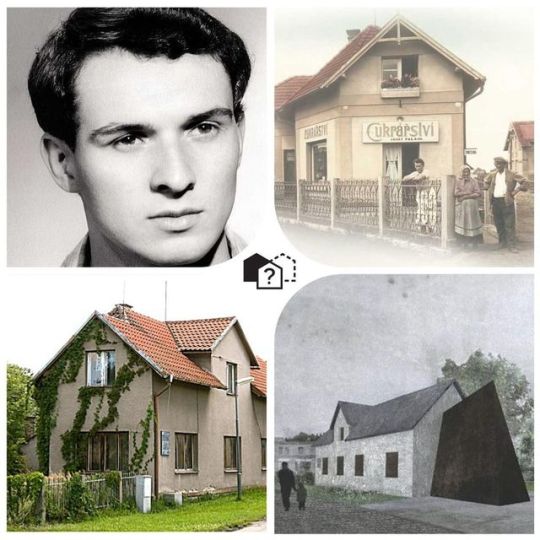
🏡 Rodný dům Jana Palacha ve Všetatech - právě odsud odjel dne 16.1.1969 Jan Palach do Prahy, kde se kolem 15 hodiny na Václavském náměstí upálil, tedy přesně před 50 lety. Ve třicátých letech v jeho rodném domě Janův otec provozoval vyhlášenou cukrárnu. Změna režimu po roce 1948 postihla i podnikání Palachova otce a jeho cukrárna byla zrušena. Po smrti matky rodina dům prodala, chvíli byl obývaný a poté mnoho let prázdný chátral. V roce 2011 přišel pražský grafik Jan Poukar se svým spolkem Národ pohasl s myšlenkou dům zachránit a vybudovat v něm muzeum s cukrárnou. V roce 2013 poslanci odhlasovali odkoupení chátrajícího domu státem s cílem vytvořit v něm muzeum a památník Jana Palacha. Poté proběhla architektonická soutěž o ztvárnění památníku - vítěznému návrhu dominuje černá masivní „hrana zla“ procházející svým ostřím domem, zahrada se má proměnit na meditační centrum. Původně měl být památník otevřen už minulém roce k 50 výročí okupace, rekonstrukce stále probíhá, otevření se plánuje v létě 2019.⠀ Profil objektu s řadou dalších informací a fotografií: https://buff.ly/2MbVYlM⠀ ⠀ #prazdnedomy #architektura #palach #rekonstrukce #vsetaty #hranazla #okupace #pamatnik #cukrarna #praha https://www.instagram.com/p/BssrDACAqy0/?utm_source=ig_tumblr_share&igshid=hi190b5bl909
0 notes